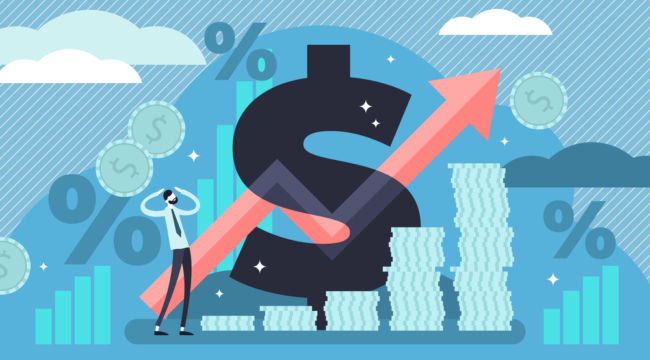The Fast Track From No Inflation to Runaway Inflation
by Jim Rickards, Daily Reckoning:

Today’s environment is drastically different than it was in the late ‘70’s and early ‘80s when inflation was nearly out of control. Today, disinflation is the primary challenge central banks face, not inflation.
It’s impossible to imagine another Volcker today. Today’s markets depend on the artificially low interest rates that the Fed’s been generating since 2009. Raising interest rates would devastatingly pop the asset bubbles in stocks and elsewhere.
Remember how markets revolted against the possibility of further rate increases last December, when rates were still under 3%? Imagine 20% interest rates.
But the problems in the economy today are structural, not liquidity-related. Federal Reserve officials have of course misperceived the problem. The Fed is trying to solve structural problems with liquidity solutions. That will never work, but it might destroy confidence in the dollar in the process.
Fiat money can work but only if money issuance is rule-based and designed to maintain confidence. Today’s Fed has no rules and is on its way to destroying confidence. Based on present policy, a complete loss of confidence in the dollar and a global currency crisis is just a matter of time.
Consumer price inflation has remained persistently low, despite the Fed’s best efforts. This has led many people to ask where the inflation is, because the Fed has created trillions of dollars since the financial crisis.
But there has been inflation. It’s just been in assets like stocks, bonds, real estate, etc. The market’s back to record highs again, in case you haven’t heard.
The bottom line is, we’ve seen asset price inflation, and lots of it, too.
But the question everyone wants to know is when will we finally see consumer price inflation; when will all that money creation catch up at the grocery store and the gas pump?
The Fed is aiming for sustained 2% inflation. But it’s proven extremely difficult to accomplish.
Personal consumption expenditures (PCE) is the core price deflator, which is what the Fed looks at. Currently, it’s stuck below 2%. It hasn’t gone much of anywhere. But the Fed continues to try everything possible to get it to 2% with hopes to hit 3%.
But the reason the Fed has struggled to attain its goals is that inflation is not purely a function of monetary policy. It’s a partial function of monetary policy. Psychology is the other factor.
Milton Friedman had a famous quote, that inflation is always and everywhere a monetary phenomenon. But it’s not really true.
Inflation is also a partial function of behavioral psychology. It’s very difficult to get people to change their inflation expectations after a trend has continued for a long time. So it’s very hard to raise inflation from under 2% to 3%.
But once it does, a psychological shift could occur, and it could lead to expectations of further inflation to come.
That’s because double-digit inflation is a non-linear development. What I mean is, inflation doesn’t go simply from 2%, to 3%, to 4%, to 5%, etc.
Inflation can really spin out of control very quickly if expectations change. In other words, it can gap higher very quickly. Inflation can go from 3% to 5% to 7% or more fairly quickly. Double-digit inflation could quickly follow.
So is double-digit inflation rate within the next five years in the future?
It’s difficult to say exactly. But it is possible. If it does happen, inflation will likely strike with a vengeance.
Please understand, I am not forecasting it. But if it happens, it would happen very quickly. We would see a struggle from 2% to 3%, and then jump to 6%, and then jump to 9% or 10%.
Everyday people would be the greatest casualties.
Read More @ DailyReckoning.com
Loading...



